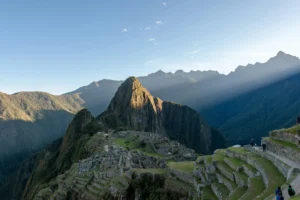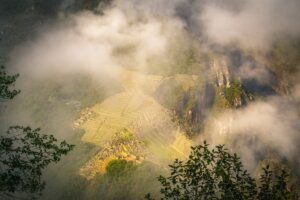When you think of Machu Picchu, you probably imagine its impressive ruins surrounded by majestic mountains, but there is something that makes this place even more special: llamas, vicuñas, and alpacas. These species not only adorn the Andean landscape with their beauty but also have a deep connection with the culture and traditions of local communities.
Llamas are loyal pack animals, alpacas produce soft and warm wool, and vicuñas, with their elegance, provide one of the most exclusive fibers in the world. Ready to learn more about these significant animals? Keep reading and let yourself be amazed by the magic of Machu Picchu’s fauna.
The Fauna of Machu Picchu and Part of Peru
The fauna of Machu Picchu and part of Peru is characterized by its impressive diversity, with llamas, vicuñas, and alpacas standing out as emblematic species. These animals not only enhance the beauty of the sanctuary’s landscape but are also essential for the balance of the Andean ecosystem and Peruvian culture.
Adapted to the extreme high-altitude conditions, they have accompanied local communities for centuries, providing wool, transportation, and a direct connection with nature. Their presence in Machu Picchu not only enriches the tourist experience but also symbolizes the living connection between wildlife and the history of the Peruvian Andes.
The Llama
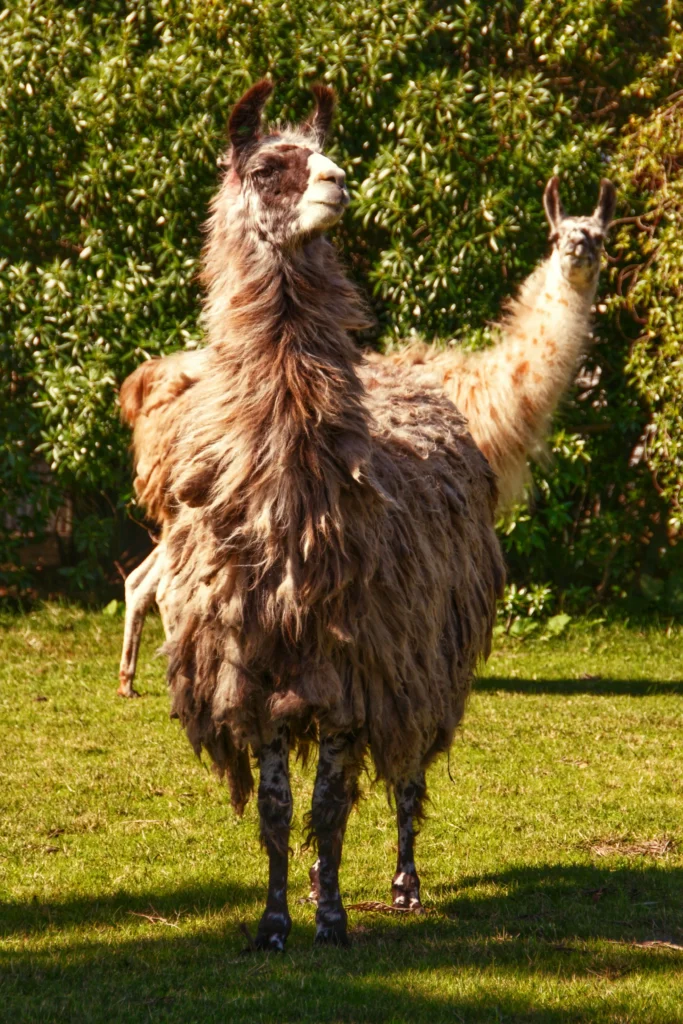
The llama is one of the most emblematic animals of Machu Picchu. Known for its calm presence and great adaptability, these animals, domesticated since pre-Inca times, are fundamental to Andean life, historically used as pack animals and for their highly valued wool.
In Machu Picchu, llamas graze freely among the ruins, creating a unique sight for tourists visiting this majestic place. Additionally, their friendly and calm nature makes them popular, especially among travelers who enjoy being close to them.
Llamas are an integral part of the cultural and natural landscape of Machu Picchu, making the visit an even more special experience.
General Characteristics of the Llama
Llamas are fascinating animals with unique characteristics that make them stand out in Andean wildlife. Here are some of their main traits:
- Size and Weight: Llamas have an average height of 1.7 to 1.8 meters up to the head and can weigh between 130 and 200 kilograms.
- Fur: Their fur is dense, and its color varies significantly, ranging from white, brown, and black to a mix of several shades.
- Behavior: They are very social and generally friendly animals, but they can become aggressive and spit if they feel threatened or stressed.
- Climate Adaptation: Perfectly adapted to high altitudes, they can withstand extreme conditions, making them excellent pack animals in the Andes.
- Longevity: Llamas can live between 15 and 20 years on average, with some even living longer.
With these characteristics, llamas are not only essential to daily life in the Andes but have also become a symbol of biodiversity and cultural heritage in the region, especially in iconic places like Machu Picchu.
Types of Llamas
Llamas are primarily classified into two types based on the length of their fur: short-haired llamas and long-haired llamas. Both types have unique adaptations that allow them to survive in the extreme conditions of the Andes:
- Short-Haired Llamas: They have lighter and less dense fur. They are more common in lower-altitude regions, and although their wool is less dense, it is still used for certain textile products.
- Long-Haired Llamas: This type of llama has thicker, woollier fur, primarily bred for its fine and soft wool, which is highly valued in textile production. Their coat helps them better withstand the intense cold of the higher regions of the Andes.
Llama Diet
Llamas are herbivorous animals, meaning their diet consists mainly of grass, pastures, plants, and shrubs. In their natural habitat, llamas graze in the Andean mountains and meadows, where they find a wide variety of vegetation that meets their nutritional needs. In places like Machu Picchu, they can feed on the grass near the ruins, where the vegetation is suitable for their diet.
Despite their simple diet, llamas have an incredible ability to survive in high-altitude areas where other species might struggle to find enough food. This type of diet allows them to stay healthy and active in the harsh climate of the Andes.
Where Do Llamas Live?
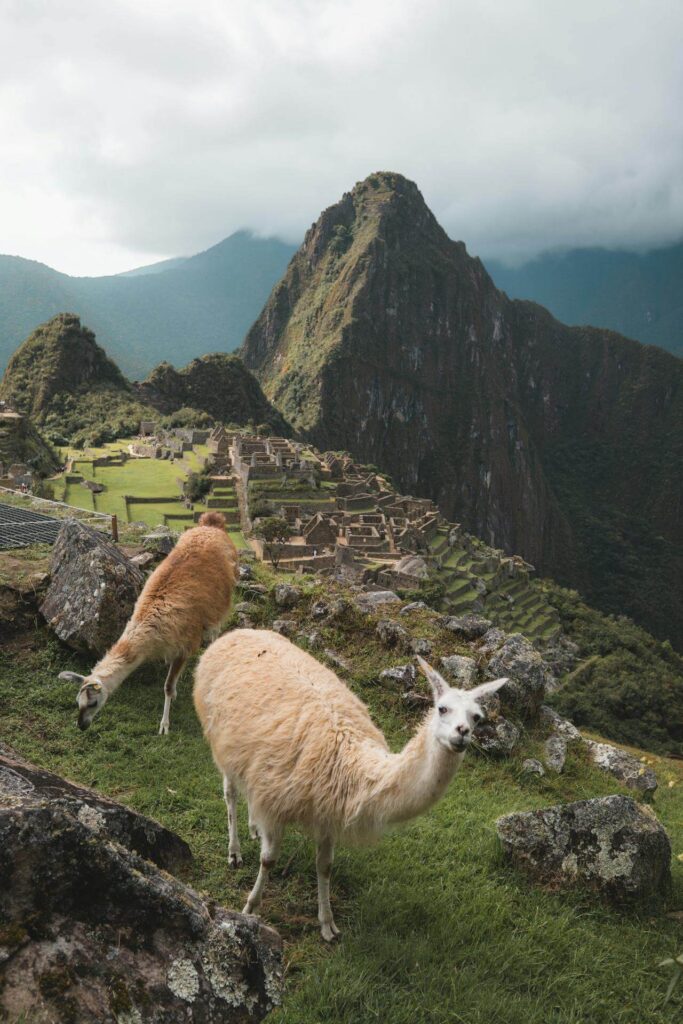
Llamas are native to the mountains of South America, specifically in the Andean region, which includes countries such as Peru, Bolivia, Chile, and Argentina. Their natural habitat is at high altitudes, where they can survive in extreme conditions due to their adaptability to cold and limited vegetation. While they are resilient animals, they feel especially comfortable in the highlands of the Peruvian Andes, such as Machu Picchu, where the abundant vegetation and the tranquility of the environment provide them with a perfect home.
What Is the Best Place to Spot Llamas?
If you want to see llamas, Machu Picchu is one of the best places to do so. These animals are found throughout the archaeological complex, from the entrance to the paths leading to the main viewpoints. Llamas, accustomed to human presence, offer a unique experience as they peacefully wander among the ruins, creating an authentic and natural atmosphere amidst Inca history.
Interesting Facts About Llamas
Llamas are fascinating animals with several surprising characteristics. Here are some of their most interesting facts:
- Load Capacity: Llamas are incredibly strong and can carry up to 30 kilograms, making them excellent pack animals in mountainous areas.
- Longevity: Llamas can live between 15 and 20 years, allowing them to have a long and productive life in their natural environment.
- Spitting as Defense: Llamas use their ability to spit as a defense mechanism when they feel threatened or to establish hierarchies within their groups.
- Communication: Although they don’t vocalize much, llamas communicate through their body postures and soft sounds, such as murmurs and grunts.
- Vision: They have an impressive field of vision thanks to their eyes being located on the sides of their heads, allowing them to detect dangers around them.
The Vicuña
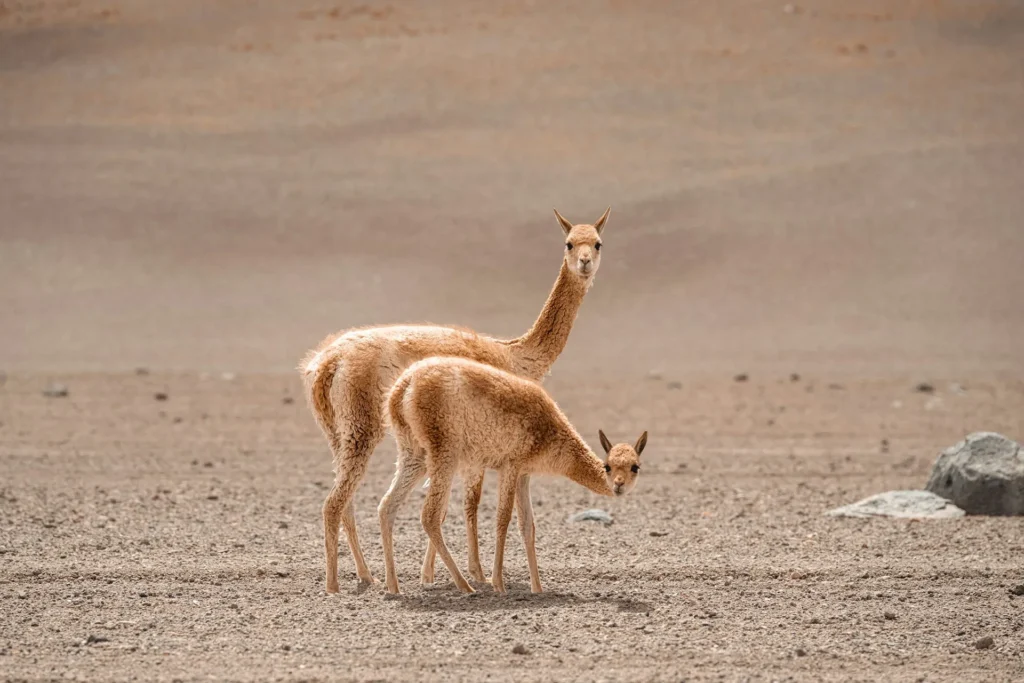
Considered the most elegant and delicate of the three South American camelid species, the vicuña is distinguished by its slender figure and more reserved nature compared to llamas and alpacas.
Although it is less visible in tourist areas, its importance is significant, especially because of the quality of its wool, which is one of the finest and most expensive in the world. This wool, extremely light and soft, has been appreciated since pre-Inca times, serving as a symbol of status and luxury.
Vicuñas play a crucial role in Andean ecosystems, maintaining the natural balance in the high mountains where they live.
Characteristics of the Vicuña
- Vicuñas are smaller than llamas and alpacas, measuring between 80 and 90 cm at the shoulder and weighing around 45 kilograms.
- Their fur is a light brown color, which allows them to blend perfectly into their mountainous environment.
- They are wild animals, unlike llamas and alpacas, and have not been domesticated by Andean communities.
- They have a slender and elegant body, adapted to the demanding conditions of their habitat in the high mountains of the Andes.
Vicuña Diet
- Vicuñas are herbivores and primarily feed on mountain grasses and Andean plants that grow in high-altitude areas.
- Their diet consists of grasses and vegetation from the more arid and cold regions of the Andes, adapting to the limited natural resources of their habitat.
- They have a specialized digestive system that allows them to make the most of the limited nutrients in their environment.
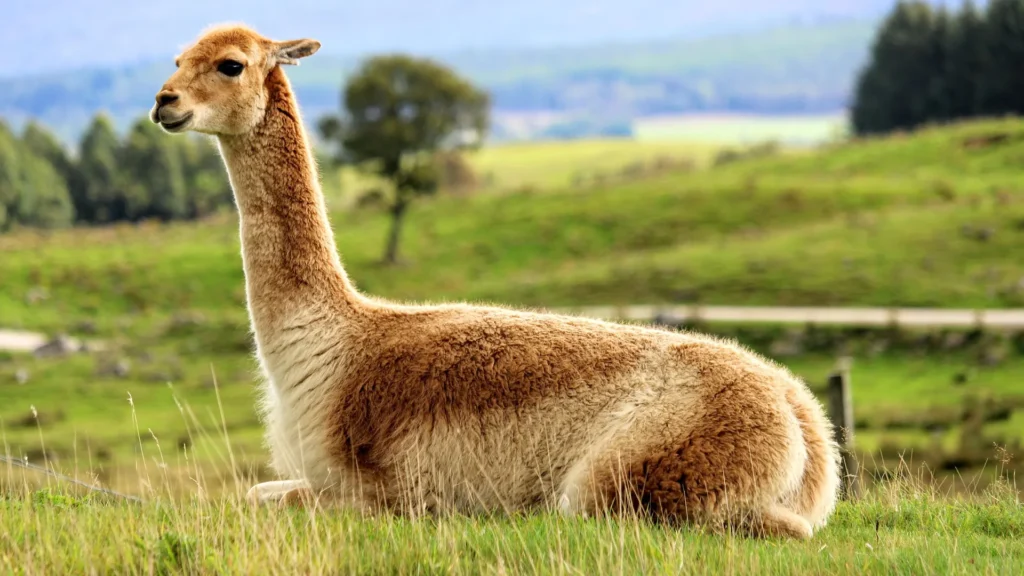
Where Do Vicuñas Live?
- Vicuñas inhabit the highlands of the Andes in countries such as Peru, Bolivia, Argentina, and Chile.
- They prefer open and clear areas, generally at altitudes above 3,500 meters above sea level.
- In Peru, they can be spotted in several natural reserves and protected areas near Cusco, such as the Pampa Galeras National Reserve and Salinas and Aguada Blanca.
What Is the Best Place to Spot Vicuñas?
Although they are difficult to spot in Machu Picchu, vicuñas can be more easily observed in other nearby areas, such as the Salinas and Aguada Blanca National Reserve in Arequipa or Pampa Galeras in Ayacucho.
Interesting Facts About the Vicuña
- Vicuña wool is one of the finest and most expensive in the world, and its collection is regulated to protect the species.
- They are territorial animals and live in groups led by a dominant male.
- The vicuña is the national animal of Peru and appears on the national coat of arms of the country.
The Alpaca
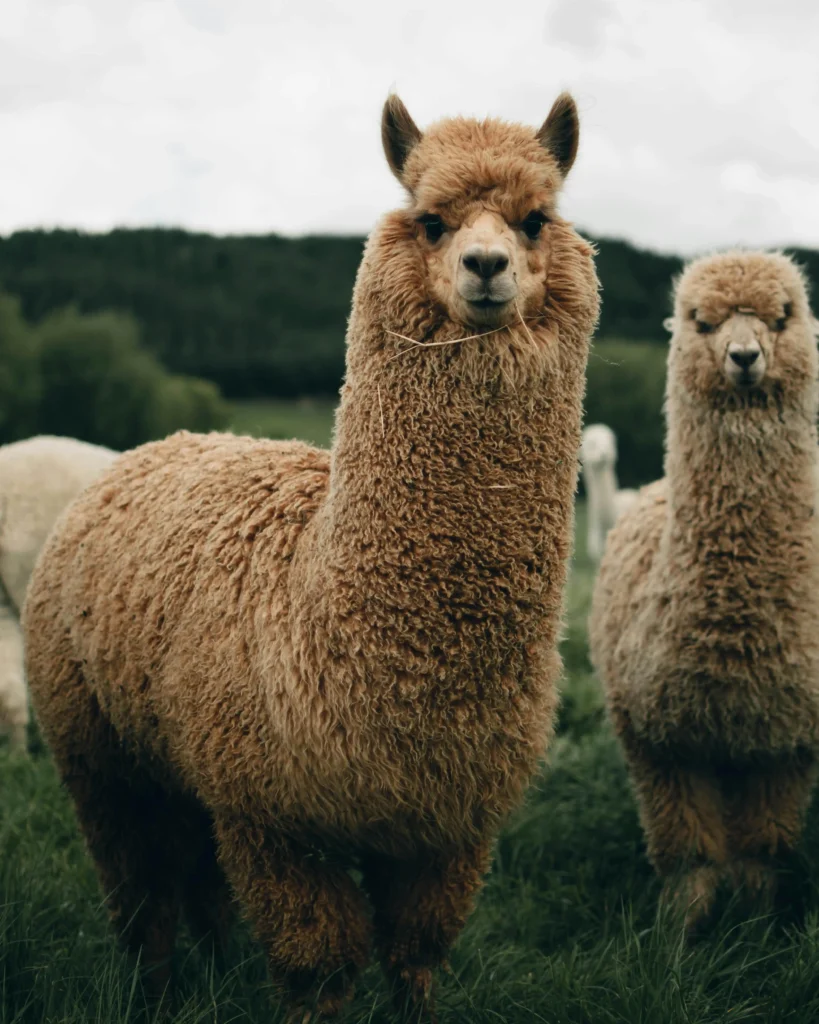
Alpacas are domestic animals that play a very important role in the life of Andean communities. With a friendly and calm personality, they are highly valued both for their wool and for their meat. Here are more details about this fascinating species:
Types of Alpacas
There are two main types of alpacas: the Huacaya and the Suri, each with distinctive features in their fleece and uses. Here are the most important differences:
Huacaya Alpaca:
- Fleece: It has fluffy, soft wool, with a coarser texture compared to the Suri. Its fleece grows outward, forming a dense coat.
- Appearance: Its body appears more compact due to its curly fleece.
- Popularity: This is the most common type of alpaca, representing around 90% of the global alpaca population.
- Use: The wool of the Huacaya is widely used to make fabrics, warm clothing, and other textile products due to its softness and ease of spinning.
Suri Alpaca:
- Fleece: Its wool is silky and smoother, with long strands that fall in soft curls, creating a shiny and elegant texture.
- Appearance: Its body is more delicate and elongated compared to the Huacaya, and its fleece forms locks that fall to the sides.
- Rarity: It is much less common than the Huacaya, representing only 10% of alpacas.
- Use: The wool of the Suri is considered more valuable for its shine and fineness, ideal for making luxury textiles.
Both varieties of alpacas are prized for the quality of their wool, which is used in the making of traditional Andean textiles, such as ponchos, sweaters, blankets, and more. Regardless of the type, the alpaca remains a key symbol of the culture and economy of the Andes.
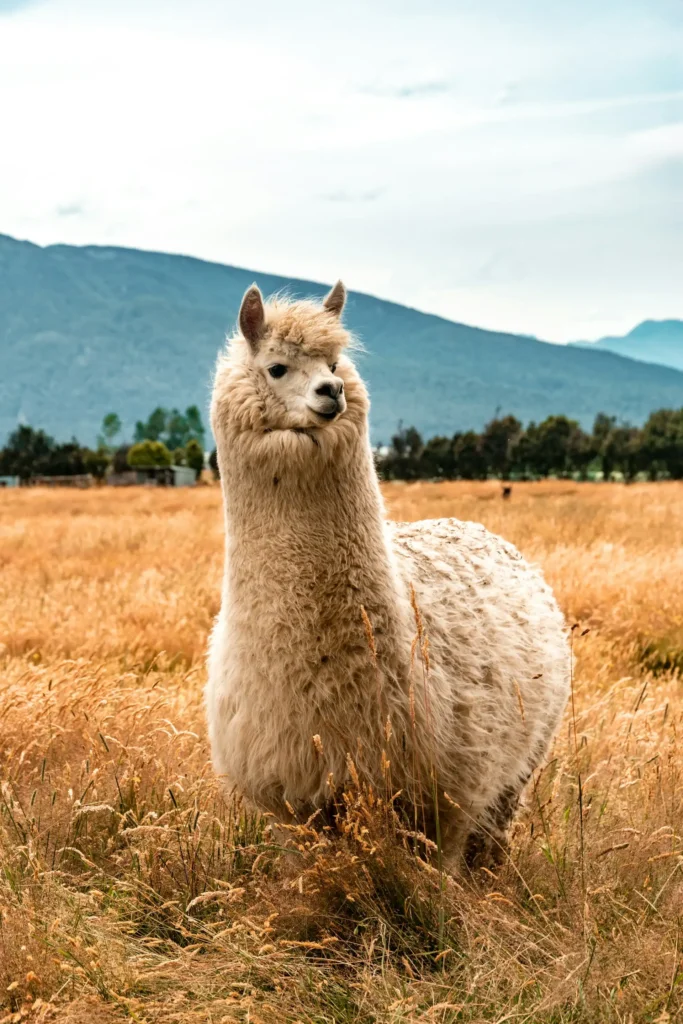
Characteristics of the Alpaca
Alpacas are smaller than llamas, measuring between 0.8 and 1 meter in height and weighing between 55 and 65 kg. They have dense and soft fleece, which can vary in over 20 different colors, ranging from whites and browns to blacks.
They are social animals and live in groups called herds. Generally, alpacas are calm and do not exhibit the same territorial behavior as llamas. Although they can spit when they feel threatened, their temperament is much more peaceful.
Alpaca Diet
Alpacas are herbivores and feed on grasses, herbs, and plants found in the Andean regions. Their digestive system is adapted to extract the maximum nutrients from the plants in their environment.
Where Does the Alpaca Live?
Alpacas inhabit the high Andean regions of Peru, Bolivia, Chile, and Argentina, specifically in areas of great altitude, generally above 3,000 meters above sea level. Their natural habitat is found on the slopes of the Andes, where the temperatures are cold and the conditions are ideal for their dense fleece.
In Machu Picchu, alpacas can be seen around the ruins, although they are not as common as llamas. However, their presence at the site is a tourist attraction that allows visitors to experience a closer connection with nature and the traditional life of Andean communities.
Additionally, alpacas are highly valued by local communities because of the wool they produce, making them a crucial species in the region’s economy.
